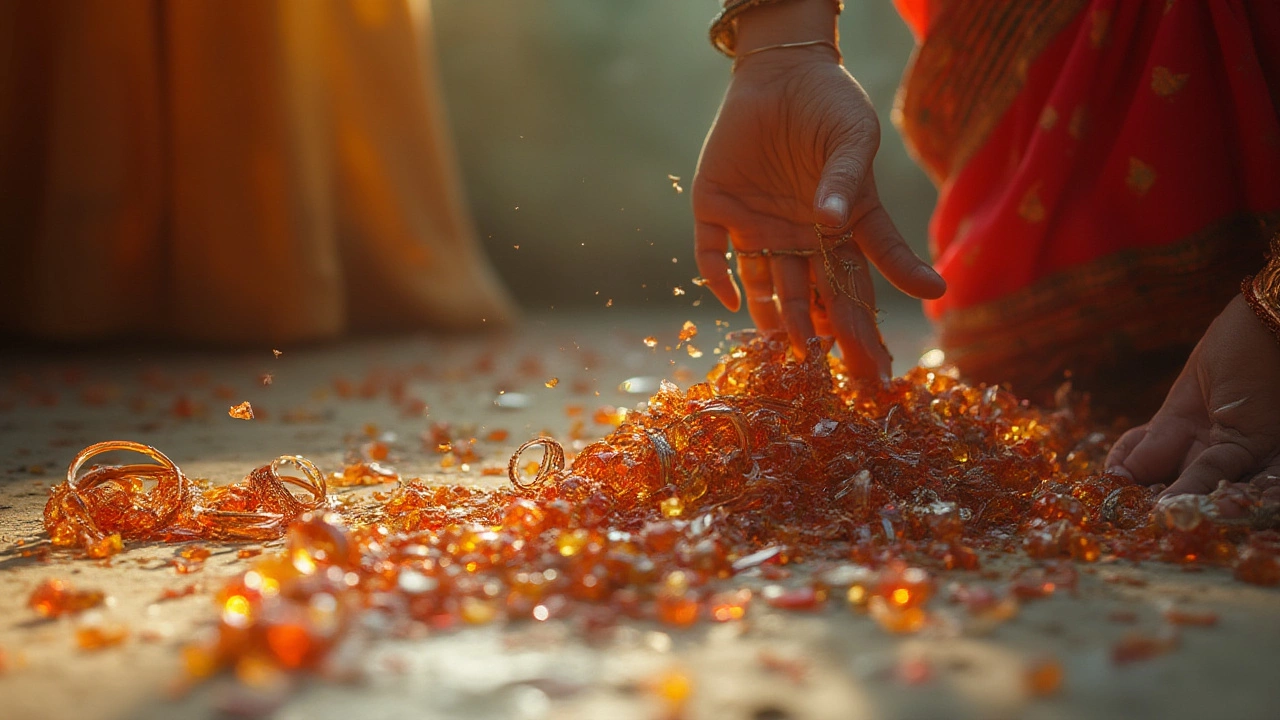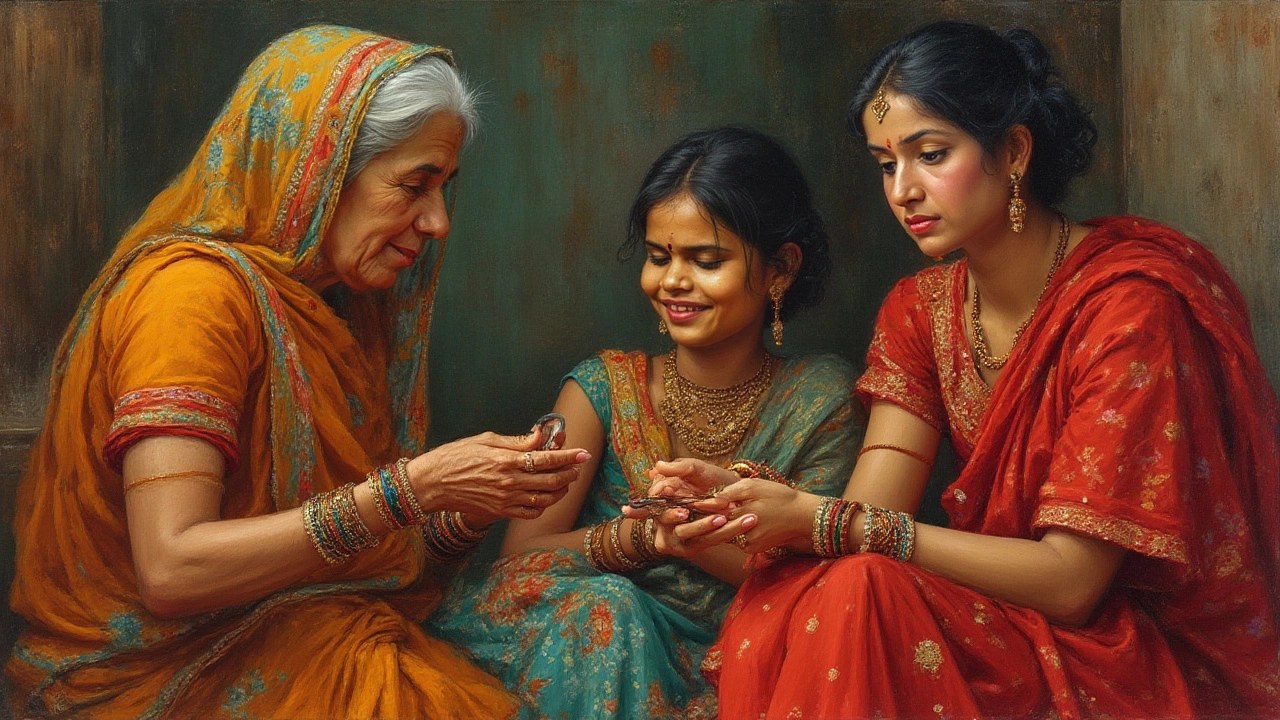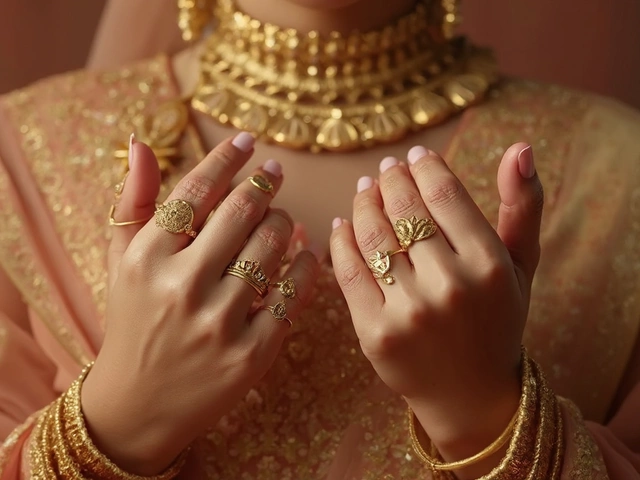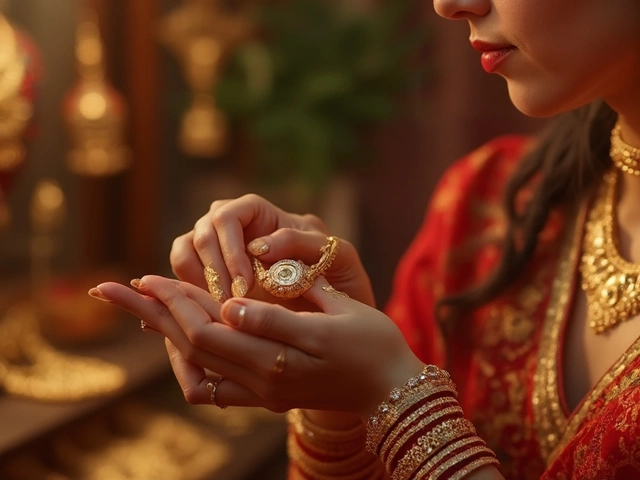
Clink, snap, pop—the unmistakable sound of breaking glass bangles carries a sharp edge, not just for your ears, but for hearts and minds shaped by centuries of tradition. It’s one of those moments where something tiny seems to echo something much bigger: belief, emotion, sometimes even fate. Around South Asia, and especially here in Sydney’s lively Indian community, you’ll spot wrists stacked with bangles in every color, but nobody wears them just for the sparkle. There’s a world of meaning wrapped in those hollow glass circles—and when they break, it’s rarely just an accident.
The Deep Roots and Symbolism of Glass Bangles
Start with this: glass bangles aren’t just pretty accessories. For women across India, Pakistan, Bangladesh, and abroad—my own mother-in-law will remind you—bangles are loaded with meaning. They’re worn to mark marriage, fertility, and auspicious beginnings. Bright reds and greens on a bride’s wrists aren’t just tradition—they’re almost a kind of shield, seen as channeling good luck, warding off bad spirits, and affirming her new start. Brides often have their bangles carefully slid on by married women in the family, and there’s almost a hush in the room as it happens: it’s that important.
But what happens when one of those glass bangles cracks? It can feel unexpectedly heavy. For some, it means a bit of daily luck has snapped. In certain parts of India, if you break a bangle accidentally, older relatives might hush the room, sweep up the slivers right away, and mutter something about misfortune. Glass, after all, is fragile by nature, just like life and relationships. It’s easy to see why so much meaning attaches itself to that sudden, sharp snap.
Different communities and families attach different stories to broken bangles. In Hindu custom, married women almost universally wear bangles as a symbol of marital status. There’s a widespread belief—especially in rural areas—that a married woman should never allow her wrists to remain bare, and that breaking bangles can signify marital discord or even be an omen of widowhood. The sound of bangles breaking, to some, is a sound of worry. In fact, many women will rush to replace them just to avoid a neighbor’s worried glance.
On the flip side, there’s also hope and renewal in broken bangles. In many households, when a woman becomes a widow, she’s made to break her bangles in a ritual to mark the end of her marital status. It’s a gesture loaded with centuries of cultural baggage—and while shockingly harsh to modern sensibilities, it’s meant to draw a public line under a loss. In contrast, young girls breaking a bangle sometimes marks blossoming youth or a wish coming true. For my neighbor in Parramatta, her girls take it as a sign that something good is about to happen—“the first sign of big happiness,” she jokes, as her youngest sweeps up the pieces for luck.
Within Sikh, Muslim, and other South Asian communities, bangles are also deeply symbolic. Among Punjabi Sikhs, glass bangles called "churiyan" are brightly stacked for special events, and at weddings, bangles are revered. In some parts of Pakistan, they mark Eid celebrations. And while breaking is still generally avoided, the meaning shifts a bit: for some, it’s just bad luck; for others, it’s just the nature of glass.
There’s even a practical bend to the lore: glass bangles can break easily with everyday chores, especially if you’re stacking groceries or cleaning up, and sometimes people simply shrug off a break with a laugh. But almost everywhere, if you’re gifted a bangle by someone important—like a mother-in-law or close friend—a snap can hit differently. You’re meant to take a deep breath, toss the broken piece, but keep your eyes out for any sign of change in your luck or relationships.
So what’s really behind this? The answer hangs somewhere between faith, tradition, and the very human instinct to look for signs. Breaking a glass bangle is little, but it feels big—it’s memory, superstition, and hope all colliding in a moment of breakage.

Traditions, Superstitions, and Real-life Stories
Stories around broken bangles can sound wild if you’ve never heard them before, but hang out in a South Asian household and you’ll see just how tightly-held these beliefs can be. My own wife, Maya, laughs at her aunt who insists on performing a mini-ritual with turmeric and holy water whenever someone’s bangle shatters. To her, it keeps off the "nazar"—the evil eye—something her family’s fiercely protective against, right down to the last glass splinter.
One of Maya’s cousins in Hyderabad genuinely believes that breaking three glass bangles on your right wrist in a single week means a journey is coming. She has half her friends convinced and they swap stories about broken bangles predicting a relative’s visit, a new job, or even an exam result. There’s this gentle tension in the stories—are they just old wives’ tales, or is it the universe sending a signal? From mother-in-law dramas in Sydney’s Little India to grandmothers sweeping up green and red slivers after Diwali, these traditions echo in both village and city life.
Superstitions can go further. In parts of Uttar Pradesh or Gujarat, women sometimes sit quietly for a moment after a bangle breaks, touching a piece to their forehead. Some quietly repeat a mantra or offer a prayer, just for an extra dose of reassurance against bad luck. Bangles broken at home need sweeping up fast, not just to protect bare feet, but to make sure none of that supposed misfortune lingers.
But beliefs can also change fast, especially in big cities or for younger generations. Plenty of my mates’ kids just like the colors and jingling sounds, swapping bangles at school, and see breaking one as nothing special. Even in my own home, the attitude depends on who’s watching—Maya’s mum is full of quiet warnings, Maya herself is mostly practical (unless it’s a bangle she wore at our wedding, in which case, you’d think the world just stopped spinning for a second).
It’s not all gloom and doom, either. Some families use broken bangles as a chance for creativity. Kids will collect shards to make “bangle art,” glueing bright pieces onto boxes or picture frames. There’s even a tradition in parts of Andhra Pradesh to save shards of bangles broken during happy events—like births or weddings—and use them in later household ceremonies. The idea is: if something broke during joy, it carries on that joyful energy. Seen this way, a snapped bangle isn't a disaster, but a bit of sparkling luck to be passed along.
You can also find bangles playing a part in festivals. During Teej and Karva Chauth, women exchange glass bangles as tokens of marital love. If one breaks on these days, it’s often seen as extra meaningful—sometimes a problem, sometimes a wish. People’s feelings about bangle breaking run from the deeply spiritual to just deeply personal. I’ve met women who swear by their daily rituals, and others who say, “It’s just glass.” That collision is what makes bangles so fascinating: they’re tradition and modernity, worn on the wrist.
Among communities settling abroad, like in Sydney or London, these beliefs get reshaped. Maya and her friends spin stories about mothers texting across continents if they hear a bangle broke—Do more prayers! Did you eat something wrong? Sometimes the generational shift is part nostalgia, part fresh start.

Modern Views, Practical Tips, and Preserving Heritage
If you’re actually wearing glass bangles every day, you’ll know they love to break at the least convenient moments. Whether you believe in superstition or not, nobody loves getting a tiny shard in their fingertip—so here are a few tips from decades of bangles on wrists in my household. Never stack too many bangles too tight—leave a bit of space for movement. Always slide them over your hand with a little bit of oil or lotion, especially in cold, dry weather. And don’t try to wedge them on if they don’t fit—glass isn’t forgiving, and no one wants to deal with bloody knuckles at the next celebration.
If a bangle does break (and at some point, almost every bangle lover will hear that telltale snap), first, clear the area for kids and bare feet. Older members of the family often say to sweep up every piece, but from experience, it’s a good idea to vacuum too—those tiny bits can hide in rugs for weeks. Some women quietly wrap the pieces in newspaper before tossing them, or keep them aside if they’re partial to the idea of “happy event” shards coming in handy somewhere down the line.
For those who want to keep their glass bangle love strong but avoid the doom and gloom, opt for thicker bangles, or mix glass with metal ones for style and a bit more durability. Newer designs even have reinforced inner bands, so you get the jangle without as much risk of breakage. If you’re blending tradition and modern life, you can experiment with acrylic or resin bangles that look like glass but bounce rather than snap. Purists might scoff, but hey, nobody wants to miss a flight because they cut a finger in a rush packing session.
Packing for travel? Slip bangles into soft cloth pouches and keep them at the top of your suitcase, far from the heavier stuff. There’s nothing sadder than opening your case in a new city and finding nothing but shards. Maya swears by wrapping hers in baby socks—it sounds odd, but it works wonders.
Younger folks are making their own traditions, with many viewing broken bangles as just the cost of daily life. At the same time, there’s a new pride in heritage. People use old bangles in art, recycling projects, jewelry boxes, and even mosaic crafts around the home. It’s a cool way to keep the spirit of tradition alive without the heavy weight of superstition.
Still, the older mystical elements haven’t disappeared. In many homes, the act of breaking bangles during major crises—like bereavement—is still practiced. It marks the passage from one phase to another, even as people become more aware of the symbolic, rather than magical, elements behind it.
So, what does breaking glass bangles really mean? Maybe it’s about luck, maybe it’s a glimpse of old fears, maybe it’s just glass reacting to the real world. I’ve seen women hold onto unbroken wedding bangles for decades, and others toss shards into the bin with a shrug. The sound of breaking glass can mean sadness, hope, superstition, or just another story to tell at dinner—sometimes all at once.
Whether you see a broken bangle as bad luck, a sign from the universe, or just part of life, there’s no denying that these glass circles carry stories and secrets in every clink and snap. That’s why, even today, breaking glass bangles feels more like a rite of passage than a simple accident. Maybe next time you hear that sharp little snap, you’ll see a whole world reflected in the slivers—ritual, resilience, and a flash of luck, all wrapped around one slender, colorful wrist.


